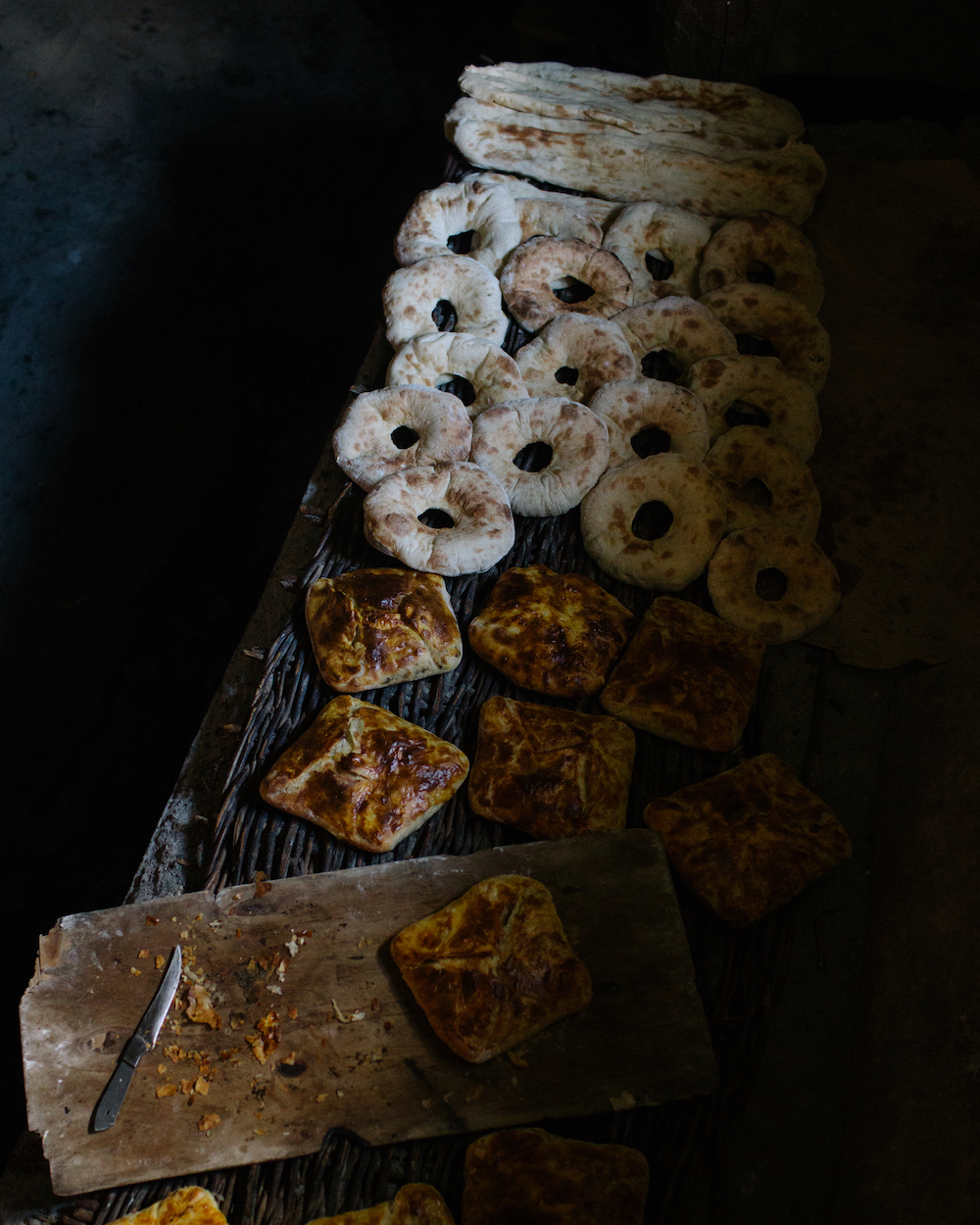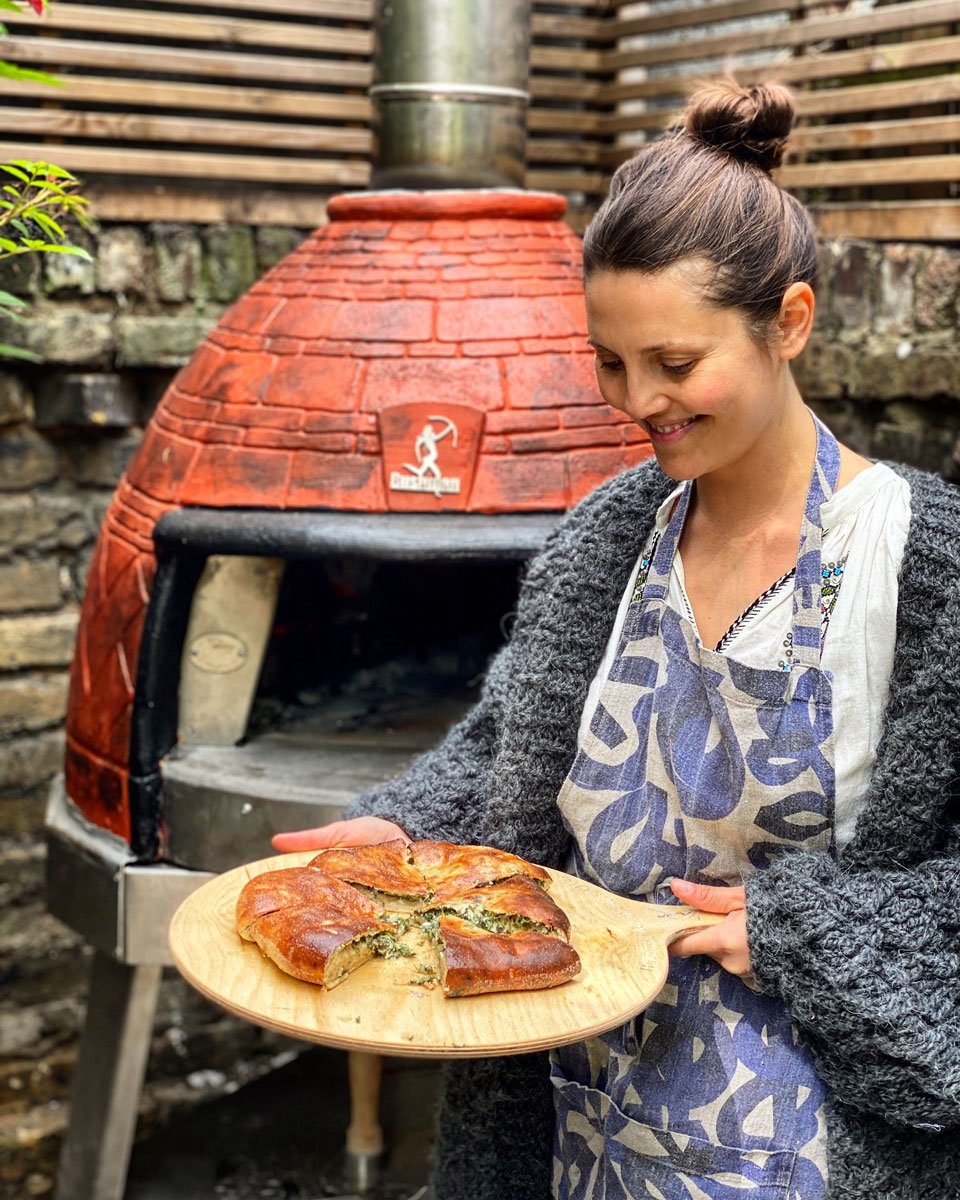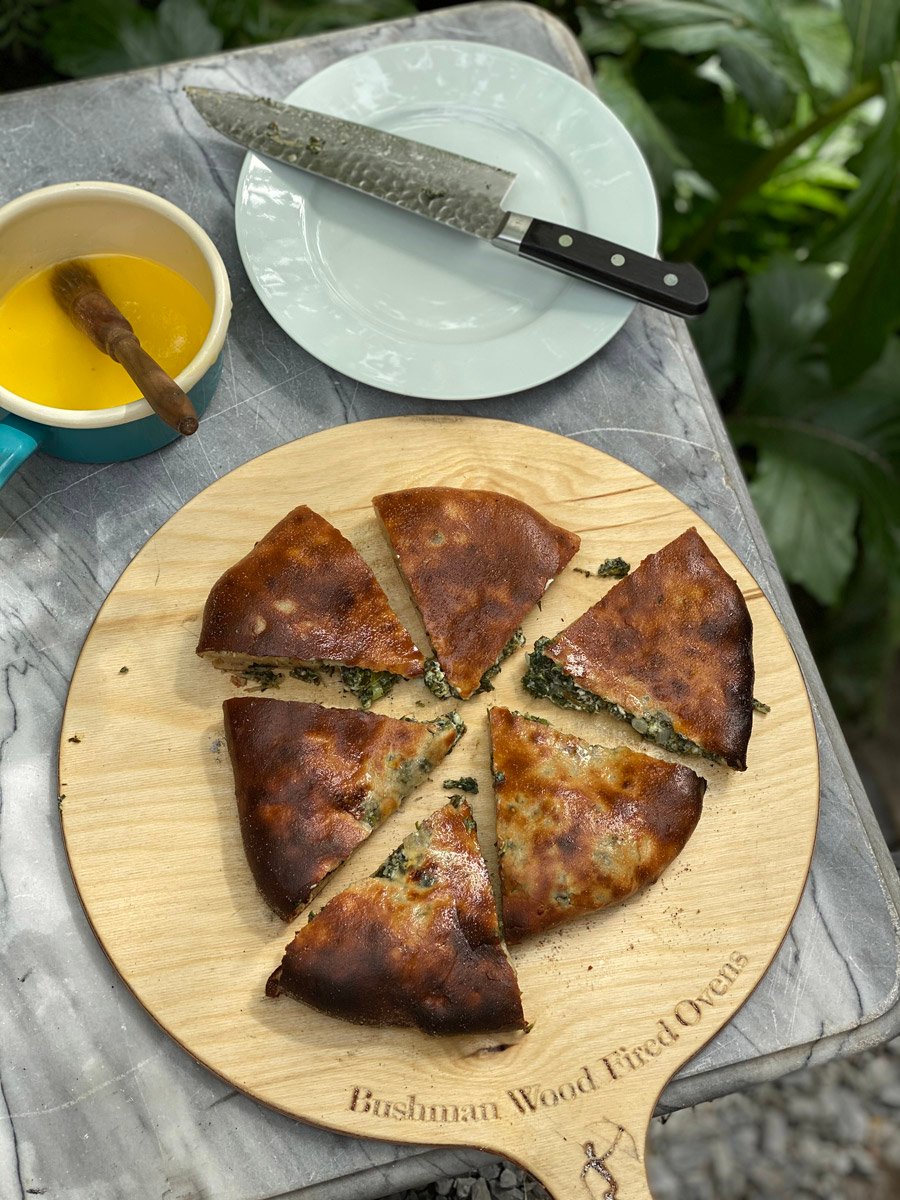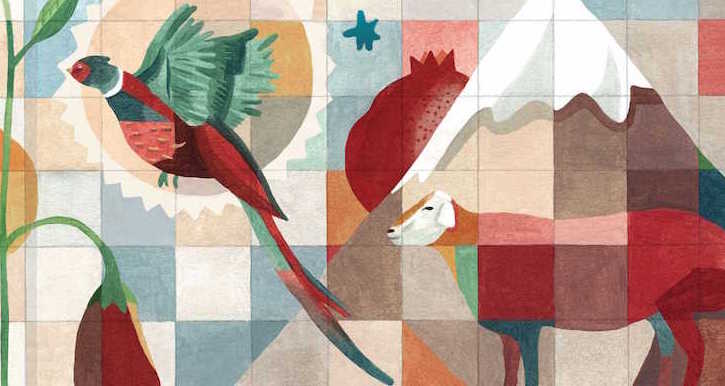Learn to make nettle and feta Ossetian pies with chef Olia Hercules
London-based Ukrainian chef Olia Hercules is renowned for celebrating the many culinary traditions and diverse tastes of the New East. For many English-speaking audiences, her work was the first introduction to the dishes of countries like Ukraine, Georgia, and Uzbekistan. Interweaving gastronomic journeys with captivating storytelling, Olia’s work is not only about recipes but about deeper connections of food culture to history, memory, and the social complexities of the region.
Olia’s approach to cooking always yields incredible warmth and colour as it draws directly from her life and personal memories. In her 2015 debut cookbook Mamushka, Olia draws on the culinary secrets of her mother, aunts, and grandmothers — a multicultural heritage taking in Ukraine, Armenia, Moldova, Georgia, Siberia, Azerbaijan, and Uzbekistan. Two years later, in 2017, she published Kaukasis, a culinary journey through Georgia, Azerbaijan, and beyond, for which she retraced the road trip she used to go on as a child with her family in the South Caucasus. Her upcoming title, Summer Kitchens, available for purchase from June, explores the culture of seasonal kitchens in her native Ukraine.
Especially for The Calvert Journal, Olia shares the recipe for Ossetian pies, traditional pastries from the Caucasus. Usually prepared with a variety of different fillings (meat and herbs, or cheese and seasonal greens) and brushed with butter, they are a crispy, delicate, and comforting dish for laid-back days and trying times.
Ossetian pies stuffed with nettles, sorrel, and feta
(Makes 2 pies, and serves 6 as lunch, or 12 as a starter)
Packed with fresh herbs and warm flavours, this recipe is inspired by Ossetian pies. Ossetians originally lived in the heart of the Greater Caucasus Mountains, and their pies are probably as old as the hills. Traditionally served in threes, each of them signifies a different element: earth, water, and fire. I fell in love with the pagan origins of this recipe, and with their outstanding flavour.
I normally make this gorgeous flatbread using beetroot tops. These often get thrown away, which is a great shame as they taste delicious, especially in spring. In the Caucasus, there are more than 300 wild herbs that locals forage and then use for cooking. The pies are normally brushed with melted butter as they come out of the oven, but I love to go one step further and smother them in beurre noisette (dark butter). Try it — it will be the best thing you eat this spring.
Ingredients:
For the dough:
— 150ml yoghurt
— 100ml lukewarm water
— 7-10g fast-action dry yeast
— 1 tbsp honey
— 10g crushed Maldon salt or rock salt
— 400g flour (plain, white bread or wholemeal)
— 20g semolina, flour or polenta for dusting
For the filling:
— 200g feta
— 200g nettles
— 70g sorrel
— 1 large spring onion
Method:
First, make the dough. At the start, it will look quite wet, but do not panic — it’s meant to be, and I’ll guide you through the process. Add the yeast and honey to the warm milk, and let it rest for 5-10 minutes so that the yeast activates. Then, add the salt and the kefir or yogurt, and gradually add the flour. Stir in the flour with a fork or spatula, incorporating it into the liquid. The mixture will look a bit rough, but it will become smoother as it rises. Cover with cling film, and leave somewhere warm to rest for 1-2 hours.
For the filling, have ready a large bowl with cold water and ice. Put the nettles into a pan with boiling water and cook for 3-4 minutes, then drain, and immediately immerse into iced water. Submerge them for a couple seconds and take them out, draining out as much water as you can. Then, slice the nettles and its stalks very finely. Slice the raw sorrel and spring onion, crumble the feta, and mix everything well using your hands or a fork.
Prepare your working surface: take a flat tray, cover it with baking paper, half of the semolina, and a clean, damp, kitchen cloth. Preheat the oven to its highest setting (mine is 220C).
Take the dough, which should have risen by now, and cut it in half. Sprinkle your work surface and hands with flour. Using a rolling pin and your hands, gently roll and stretch each piece of the dough out into a 30cm circle. Then, grab the filling, take half of it, and place it in the centre of the rolled out dough.
Now, on to the fun folding bit. Take one edge of the circle and fold it into the middle. Then, bring the edge of the first fold into the middle and fold again. Repeat until you have created about six folds and it resembles a flattened purse. Flatten it further with your palms, gently pushing the filling into the edges of the dough. You should end up with a 20-25cm diameter flatbread. Do not worry if you get some rips, as you need to let some air out during the baking process. Gently flour the top, flip it over, and carefully place it on the tray.
Sprinkle a little more semolina or flour over the top, and make a little hole in the middle to let the steam out.
Cover the flatbread with a damp towel, and let it rest again from 30 minutes to an hour.
Meanwhile, melt the butter. If you would like to turn it into brown butter or beurre noisette, pour it into a light-coloured pan, so you can see the colour change. Once the butter has melted, reduce the heat, and it will start foaming and sizzling. When the colour changes to dark golden, almost amber, and it smells nutty and sweet, take it off the heat and immediately pour into a bowl.
Place the flatbreads into the oven, and check after 8 minutes. If they are not golden yet, give them another 2-3 minutes. As soon as they come out of the oven, brush them generously with the melted butter, slice, and serve as lunch with a leaf salad or a spring broth, or simply as a starter.
Tip: The filling and the shaped flatbreads freeze very well. If you do so, just bake from frozen for 15 minutes instead of 10.
Seasonal Variations:
Late spring: kale, chard, beetroot tops, wild garlic, or other soft herbs.
Summer: chopped coriander, dill, basil, mint, tarragon watercress, and feta.
Autumn: pointed cabbage, lightly cooked with pancetta, and grated apple.
Winter: caramelised onions, grated raw pumpkin, and fresh pomegranate seeds.






